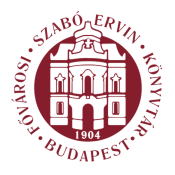Matits Ferenc: Protestant Churches - Our Budapest (Budapest, 2003)
social, cultural and religious events were paid into the church construction funds. As a result of these efforts, a total sum of 53 thousand pengős was raised from 563 contributors. And yet the commencement of construction work could not seriously be considered before the municipality pledged its own contribution, which amounted to 120 thousand pengős, payable over three consecutive years. Of the competitive tenders, the jury found the neo-Romanesque designs made by architect Kálmán Dudás the most worthy of execution. Following the issue of the construction permit in 1930, the foundation stone was ceremonially laid on 15 April 1930 in the presence of the country's Regent. As a result of the work undertaken with intense application, the church and the parsonage were topped out by December the same year. In 1931 the stellar adornment was mounted on the tower top; the ornamental plastering of the fayade, the stairs, the basement, the parsonage and the administrative office had also been completed. From 1932, with the depletion of the funds, work on the interior slowed down considerably. With bank loans and further donations, the missing amount was raised. The memorial church, under construction at the time, was exhibited at the National Calvinist Exhibition of 1934 held in the Museum of Applied Arts. The building was consecrated on 22 September 1935. The 400-kilo Bell of Grat- itude, cast in the workshop of the Sopron-based Frigyes Seltenhofer and Sons, and the Bell oftj/outh were ceremonially installed at Easter 1937. Above the entrance of the church, which stands along one of the busiest thoroughfares of Budapest, is the inscription To the glory of God and in memory of the heroes. Mounting a few steps, you enter the porch through an ornamental portal; from here the visitor can proceed into the nave or access the basement of the gallery by way of a staircase. The 320-square-metre plastered interior has an internal height of 11.5 metres and is covered by a reinforced-concrete barrel ceiling. On either side are rows of windows. On the north side of the church there are the pastor’s room and the sacristy. The former can be reached by way of a small flight of winding stairs. The same stairs also lead to the organ and the choir. The 32-register organ was ceremonially installed in 1942. Opposite the entrance at the end of the nave stands the wood and artificial marble pulpit. Underneath this baldachin-topped pulpit, decorated with velvet drapery, is a niche where the registers and other memorabilia commemorating the names of the war heroes are kept. Next to the pulpit, on either side of the apse, are the pews reserved for the pastors and presbyters. Above the psalm boards on the side walls of the apse there is an arcade-shaped choir loft arranged 58
